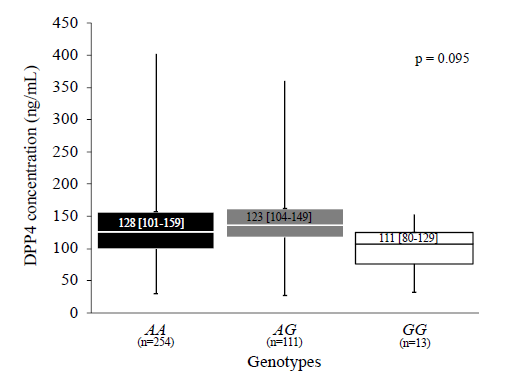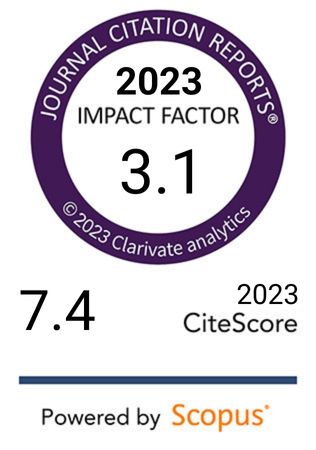DPP4 rs17574 polymorphism and elevated DPP4 levels linked to fatty liver in subclinical atherosclerosis: GEA study findings
DOI:
https://doi.org/10.17305/bb.2025.11950Keywords:
Dipeptidylpeptidase-4, DPP4, fatty liver, FL, genotypes, subclinical atherosclerosis, polymorphismsAbstract
Dipeptidyl peptidase-4 (DPP4) concentrations are known to correlate with nonalcoholic fatty liver (FL), which is also associated with subclinical atherosclerosis (SA). This study aimed to determine whether DPP4 concentrations and the DPP4 rs17574 polymorphism are associated with FL in individuals with SA. The study included 378 participants with SA, of whom 143 had FL and 235 did not. DPP4 serum concentrations were measured using a Bioplex system, and DPP4 rs17574 genotypes were determined using TaqMan assays. Logistic regression was used to assess the relationships between FL, DPP4 concentrations, and rs17574 genotypes. Overall, DPP4 concentrations did not differ significantly between individuals with and without FL. No significant differences in DPP4 levels were observed among DPP4 genotypes in the total sample. However, within the FL group, significant differences in DPP4 concentration were observed across genotypes: AA genotype (134 [106–175] ng/mL), AG genotype (128 [114–149] ng/mL), and GG genotype (80 [71–117] ng/mL); P = 0.019. The DPP4 rs17574 polymorphism was associated with FL under a recessive model (P = 0.037). DPP4 concentration was also significantly associated with FL: the likelihood of presenting with FL increased by 6.2% for every 10 ng/mL increase in DPP4 levels (P = 0.009). These findings suggest that DPP4 concentration may serve as a biochemical risk marker for FL in individuals with SA. Moreover, the rs17574 polymorphism may influence DPP4 protein levels, particularly in those with FL. To our knowledge, this is the first study to describe an association between DPP4 concentration, the rs17574 polymorphism, and FL. Assessing DPP4 levels may offer a novel and effective strategy for risk stratification of FL in SA populations.
Citations
Downloads

Downloads
Published
Issue
Section
Categories
License
Copyright (c) 2025 Gilberto Vargas-Alarcón, Juan Reyes-Barrera, Guillermo Cardoso-Saldaña, Neftali Antonio-Villa, Giovanny Fuentevilla-Álvarez, José Manuel Fragoso, Rosalinda Posadas-Sánchez

This work is licensed under a Creative Commons Attribution 4.0 International License.









